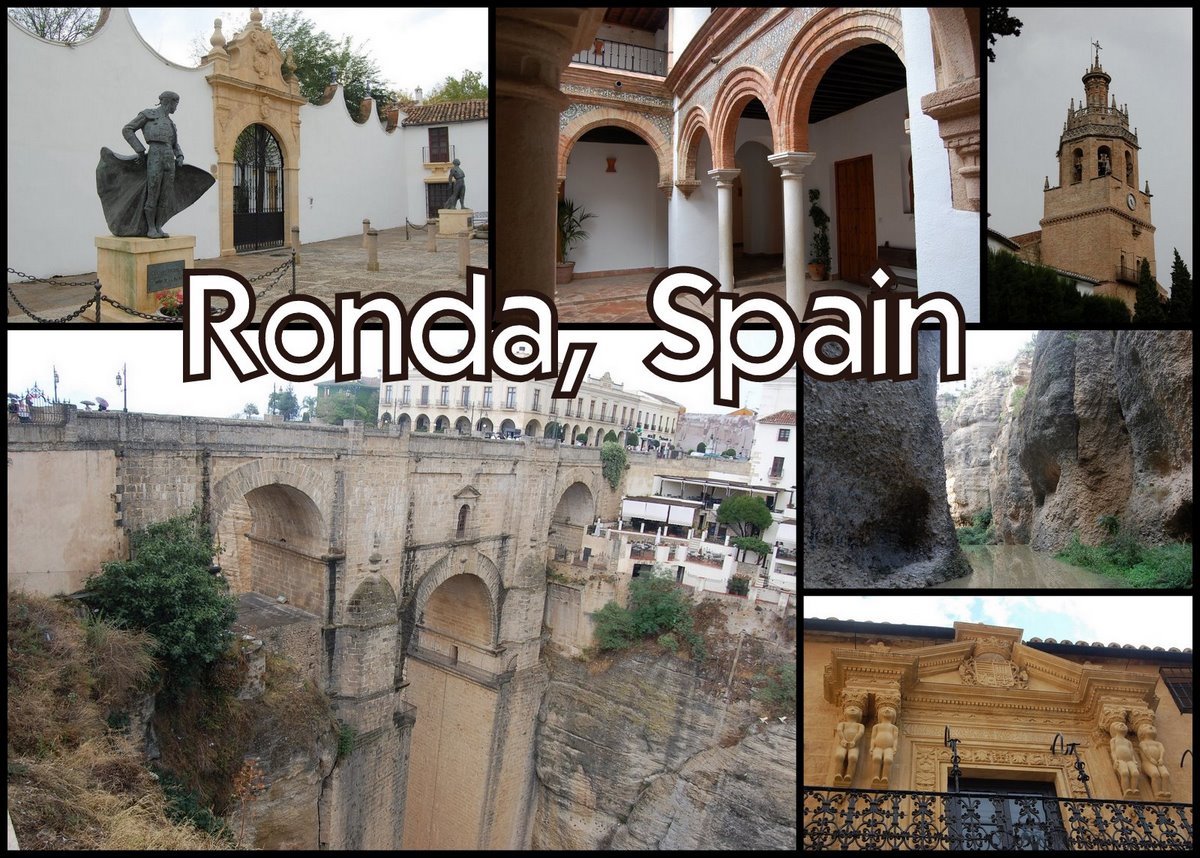
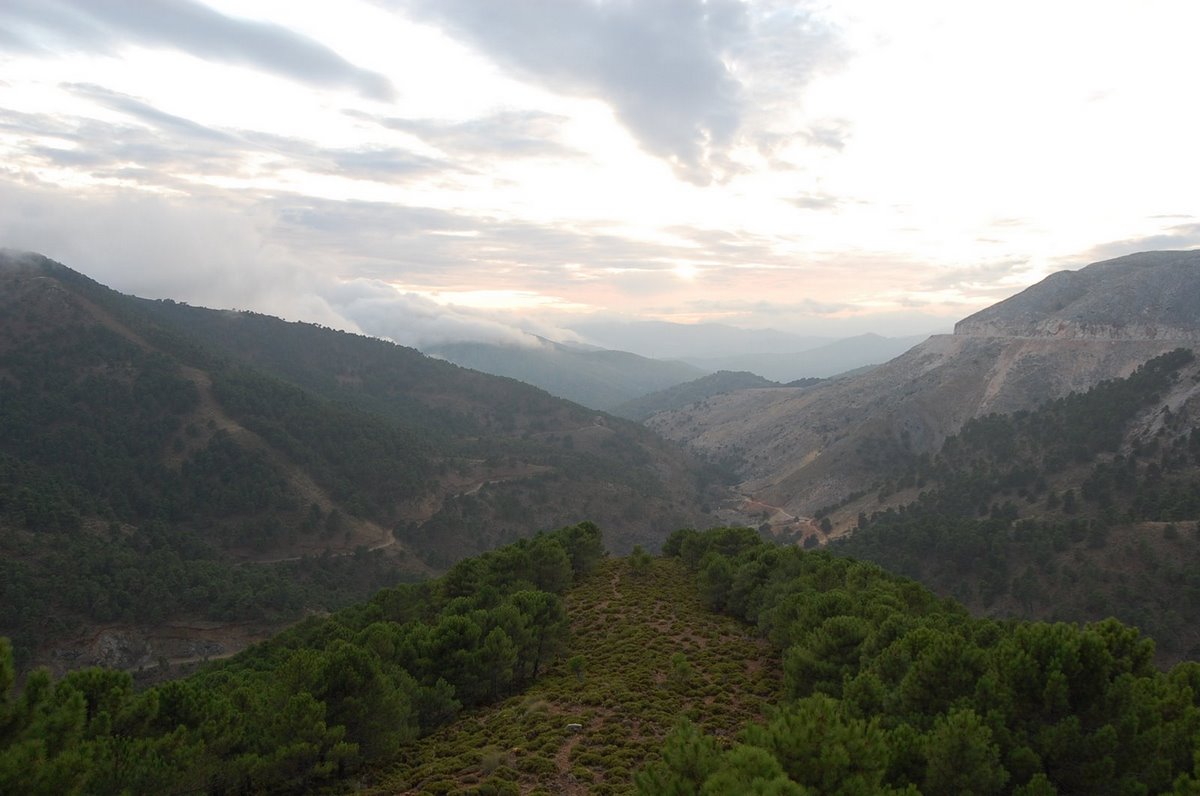
These colliding continents left limestone mountains to squeeze Ronda, typically providing views of both mountain and sea. Paleolithic tribes roamed the Serranía de Ronda, leaving behind 20,000-year old red-and-black paintings in the nearby Cueva de La Pileta. Scientists estimate that the worldwide population was about 2000 breeding adults before the Neolithic era –worldwide! – so this was not a crowded place. It still isn’t. But today with the vanishing barriers of the European Union and budget airlines (e.g., Ryan Air), these hills are becoming havens for a different sort of nomad: snowbird Brits crawling their golf courses. We visited in late September 2008 – just as the world financial crisis was beginning to make this area’s nearly omnipresent building cranes an endangered species. A few months after our visit, unemployment in sunny Andalusia hit 22% -- that's double what is was in the great tricities of Detroit/Dearborn/Livonia Michigan.
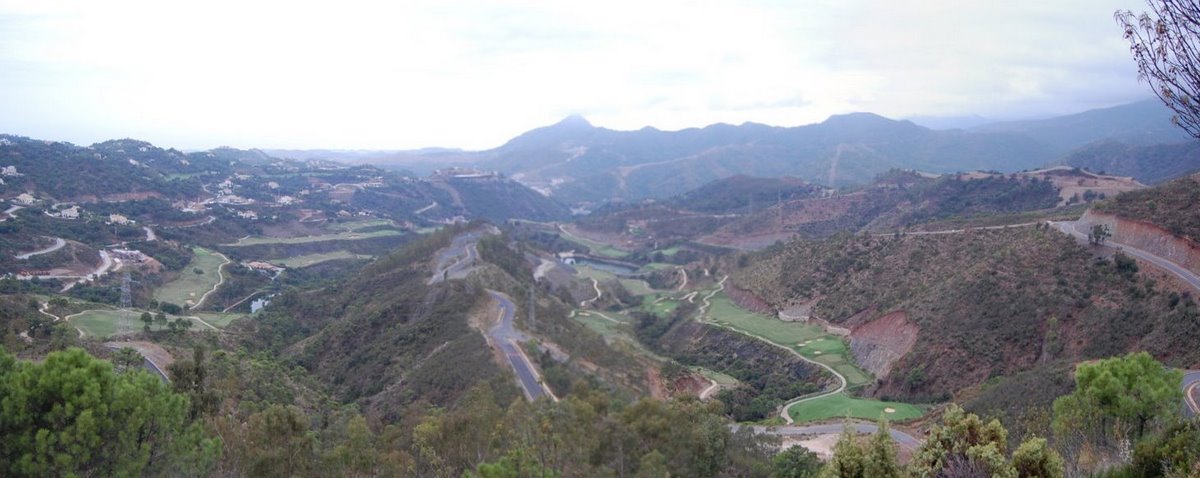
This town of about 35,000 Rondeños rests atop a sloping plateau called the Depression of Ronda (which has nothing to do with the employment rate and everything to do with geology). As we see here, altitude provides it with great natural defenses.
The Arabs conquered the city (and most of Iberia) very quickly in the early 8th century and Ronda eventually became a mini Moorish kingdom called a “Taifa.” The Christians took a long time besieging this place until winning it back in 1485. (Were the Moors better fighters? Probably not, but the populations they conquered surrendered quickly as they felt – rightly so – that the Moors would be better rulers than the Visigoths.)
At left is another view of what you would have to scale with your horse and armor to knock off this town (at least from this approach). This great natural gorge is called “El Tajo de Ronda” or "the Gash." You don’t want to fall into this gap; it’s deeper than a football field is long.
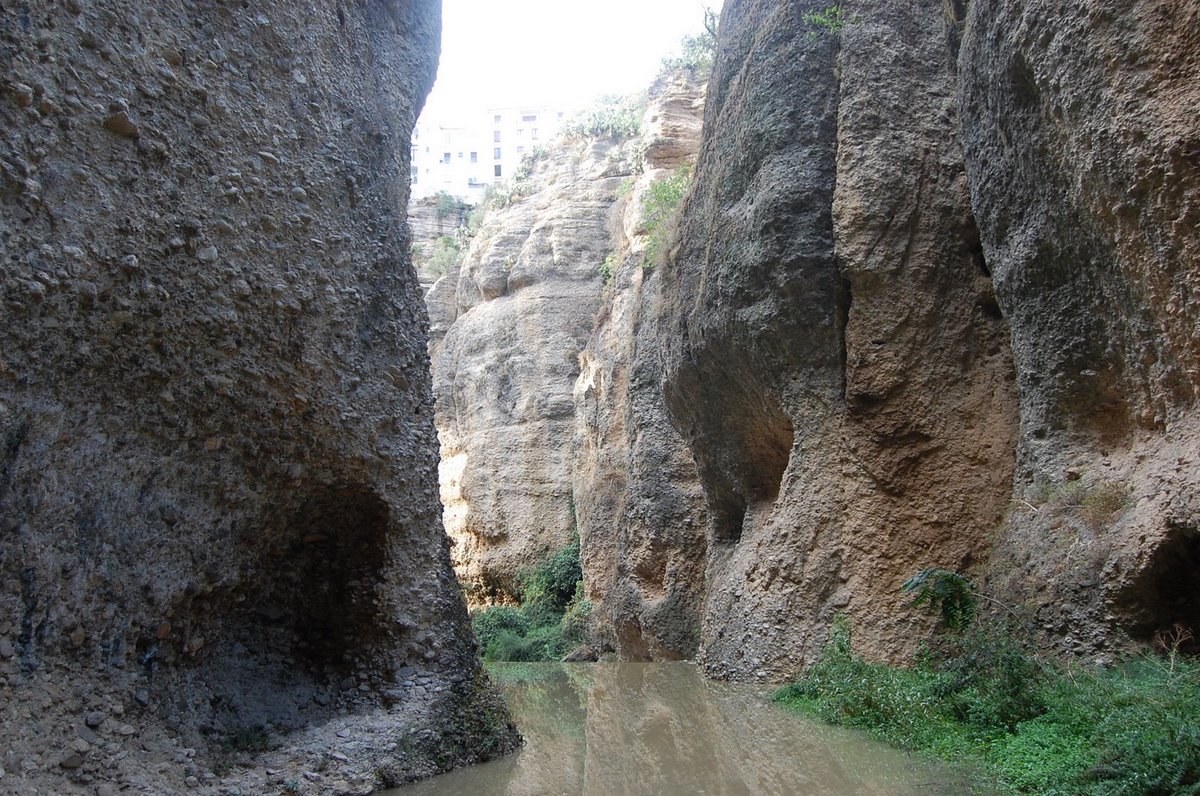 |
At the bottom of el Tajo (above right), slowly flows the chocolate milk-colored water that much more slowly carved this gorge through Jurassic limestone: The Guadalevín River. Its name means “river of milk” in Arabic. Before flowing into the Mediterranean, it picked up stream and powered several mills grinding flour -- until 1917 when a rock slide destroyed them.
Atop the cliff at left is the old Moorish Ronda called "La Ciudad." Eventually the city overflowed onto the right side (now called El Mercadillo) after the Christians wrestled the city back near the end of their nearly 800-year Reconquista. By mid 16th century, frequent crossings became a requirement of daily life; and residents started pressing for a bridge to be built near here.
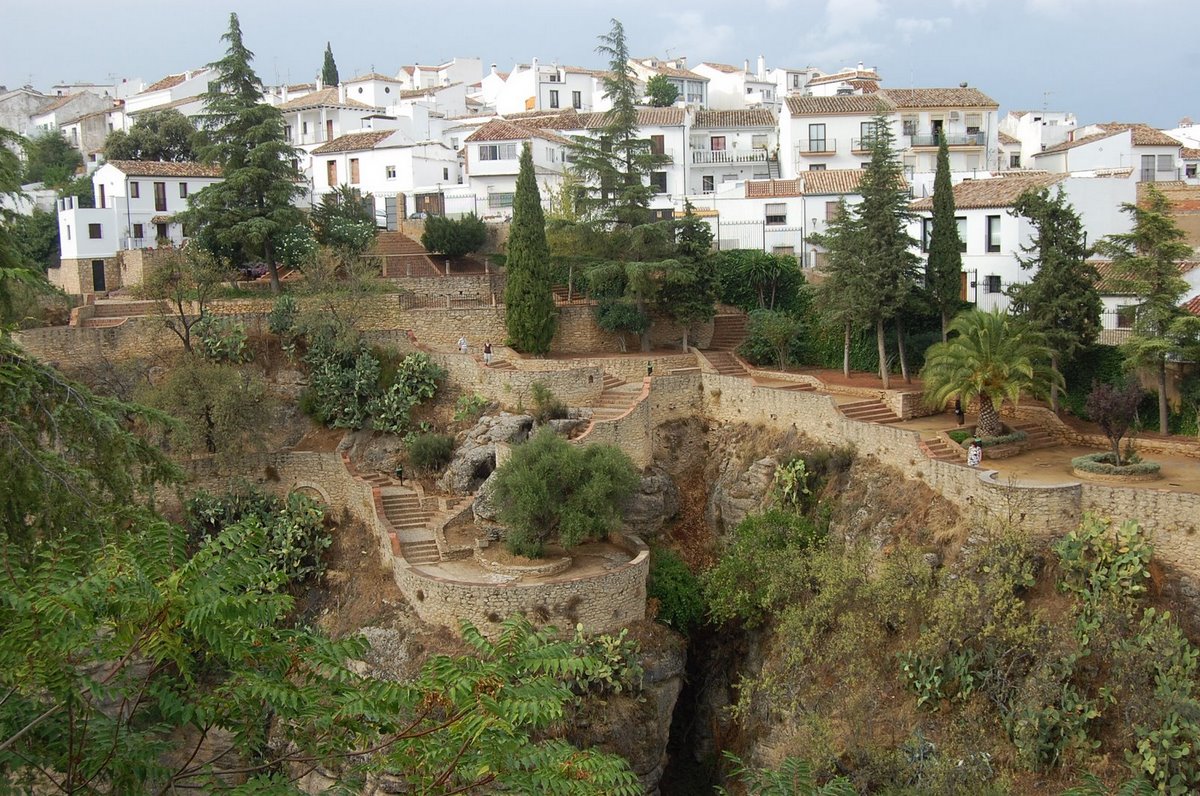 |
|
Please join us in the following slide show to give Ronda the viewing it deserves by clicking here. |
|
Geek and Legal StuffPlease allow JavaScript to enable word definitions. This page has been tested in Internet Explorer 7.0 and Firefox 3.0. Created on March 15, 2009 |
 |